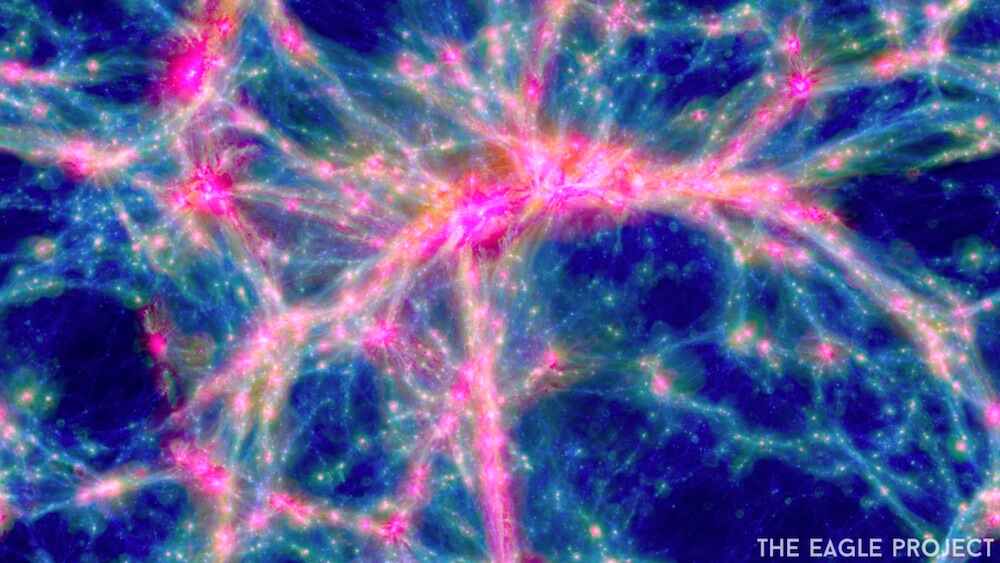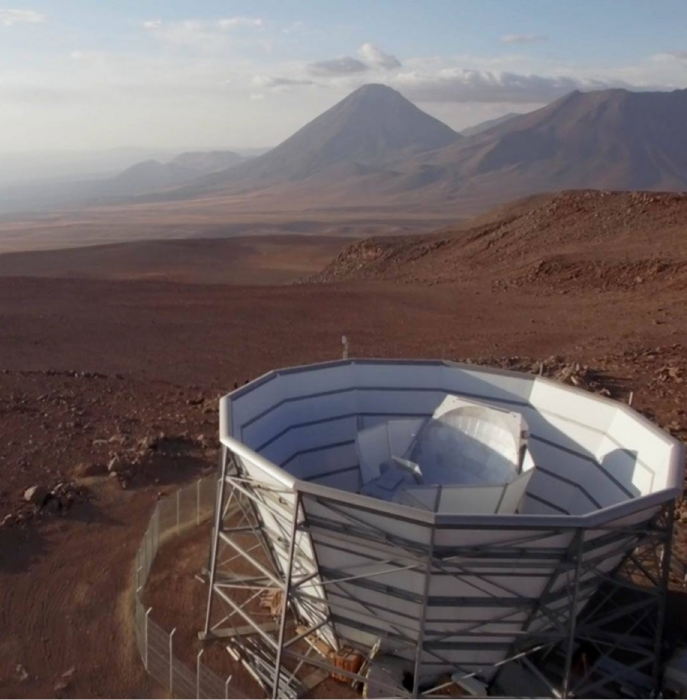
Astronomers have made the most detailed map ever of mysterious dark matter using the universe’s very first light, and the "groundbreaking" image has possibly proved Einstein right yet again.
The new image, made using 14 billion-year-old light from the turbulent aftermath of the Big Bang, shows the enormous matter tendrils that formed not long after the universe exploded into being. It turns out the shapes of these tendrils are remarkably similar to those predicted using Einstein's theory of general relativity.
The new result contradicts previous dark matter maps that suggested the cosmic web — the gigantic network of crisscrossing celestial superhighways paved with hydrogen gas and dark matter that spans the universe — is less clumpy than Einstein's theory predicted. The astronomers presented their findings April 11 at the Future Science with CMB x LSS conference at Japan's Yukawa Institute for Theoretical Physics.
Related: 10 discoveries that prove Einstein was right about the universe — and 1 that proves him wrong
"We've made a new mass map using distortions of light left over from the Big Bang," Mathew Madhavacheril, a cosmologist at the University of Pennsylvania, said in a statement. "Remarkably, it provides measurements that show that both the 'lumpiness' of the universe, and the rate at which it is growing after 14 billion years of evolution, are just what you'd expect from our standard model of cosmology based on Einstein's theory of gravity."

Scientists think that the universe that formed after the Big Bang teemed with matter as well as antimatter particles, which are identical to their matter counterparts but with opposite electrical charges.
Because matter and antimatter annihilate each other when they collide, if both were made in equal measure, all of the universe's matter should have been annihilated. However, the rapidly expanding fabric of space-time, along with some helpful quantum fluctuations, kept pockets of the universe's primordial plasma intact.
Then, according to the rules set out by Einstein's theory of relativity, gravity compressed and heated these plasma pockets so that sound waves — called baryon acoustic oscillations — rippled outward from the clumps at half the speed of light. These gigantic waves pushed out matter that hadn't already been sucked in on itself, creating the infant cosmic web: a series of thin films surrounding countless cosmic voids, like a nest of soap bubbles in a sink.
Once this matter cooled, it coalesced into the first stars, which pooled into matter-rich galaxies at the meeting points of the web's tangled strands.
But in the past, astronomers studying the cosmic web found what seemed to be a massive discrepancy — the matter was significantly more evenly distributed and less lumpy than expected. It was an ominous sign that existing cosmological models were missing important physics.
To dig into this apparent discrepancy, the researchers turned to the U.S. National Science Foundation's (NSF) Atacama Cosmology Telescope (ACT) in Chile, which scanned a quarter of the entire night sky from 2007 to 2022. Using its incredibly sensitive microwave detector, the telescope picked up light from the cosmic microwave background radiation (CMB) — the universe's very first light made just 380,000 years after the Big Bang — and used a process called gravitational lensing to map the concentrations of matter in the CMB.
Gravitational lensing is a phenomenon in which light moving through a region of space-time warped by powerful gravitational fields travels, in a curve — warping and twisting through a gigantic funhouse mirror until it emerges as a stretched-out arc called an Einstein ring. Gravitational lensing can detect dark matter, which makes up 85% of the universe's matter but cannot be directly observed.
The new map contradicted previous ones made with visible light from galaxies, and showed that Einstein's original theory was far more accurate than first thought.
What this means for our overall view of the cosmos' early evolution is still too early to say, but the researchers suggest that additional maps made using the ACT's data and fresh observations from the Simons Observatory — an under-construction Atacama Desert telescope that can scan the sky 10 times as fast as ACT — could finally resolve the perplexing cosmic mystery.







